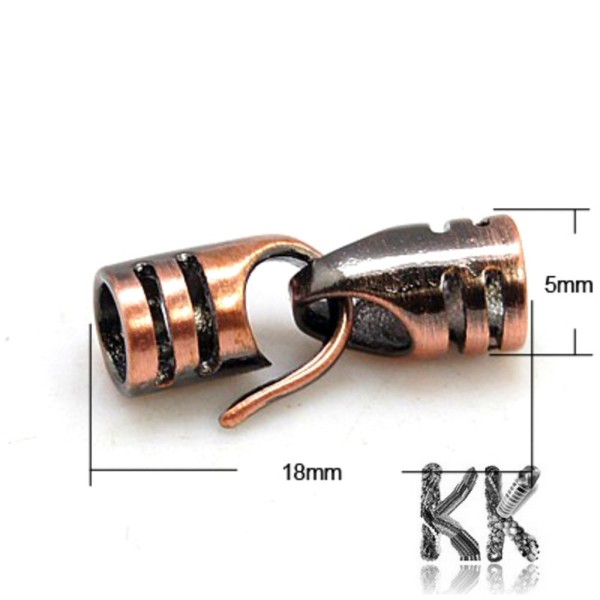Brass S-Hook Clasps - 18 x 5 mm, Hole: 4 mm (1 pair)
Brass s-hook clasp with 5 mm width and 18 mm length with 4 mm diameter eyelet. These clasps allow you to combine the setting with a chain to create interesting and unique jewelry combinations.
THE PRICE IS FOR 2 PCS (1 pair).
Brass s-hook clasp with 5 mm width and 18 mm length with 4 mm diameter eyelet. These clasps allow you to combine the setting with a chain to create interesting and unique jewelry combinations.
Brass is an alloy of copper and zinc, which has always been very popular in jewellery making, thanks to its good ductility, hardness, resistance to corrosion and, compared to the pure metals, a pleasant price. In its raw, unplated state, brass has a beautiful golden colour, which is sometimes confused with gold. Over time, however, brass becomes passivated (coated with a layer of oxides to protect it from corrosion) and changes colour through yellow-green to yellow-brown to green to green-brown. This layer is popularly known as cupro and is mostly made up of a thin layer of alkaline malachite. Therefore, brass is plated extensively to ensure better colour stability.
Due to the colour settings of the monitor, the colour of the product may differ slightly from reality.
Data sheet
- Weight
- 1 g
- Material
- Brass
- Information on allergens and heavy metals
- RoHS certificate + nickel free
.
How to identify dyed minerals, artificial minerals and imitations? Simple hammer test can do the trick..
-
How to choose correctly?
-
What is the difference between waxing, dyeing, heating?
-
Why do beads fade?
-
Is there anything I can do against it?
-
Hammer tests for Jade, Agate, Malachite, Opalite, Azurite, Turquoise, Tyrkenite, Larimar, Hematite and Coral
-
When buying beads, why are there different color qualities from the same mineral on the same string?
.
A series of videos to help you navigate your bead selection. Watch the hammer tests where we show the differences in real minerals, synthetic substitutes and plastic imitation minerals. Fortunately, we have everything clearly marked on the Katlas Beads store, we never lie. This is a certainty which is hard to find on other e-shops.
From time to time, we come across someone complaining that they ordered a mineral in a certain colour and that some minerals have a slightly different shade or spots., how do we navigate the selection process? You need to understand that raw minerals are never identical. And it's proof that it's not an imitation or synthetic. On the Katlas beads eshop, you will come across multiple grades of qualities that address these queries.
After watching the videos, you will have accurate information and be able to navigate all the e-stores selling mineral beads.
Don't forget to subscribe to our YouTube channel. You won't miss any important videos and expert advice that will make you an expert in beading.
.
















